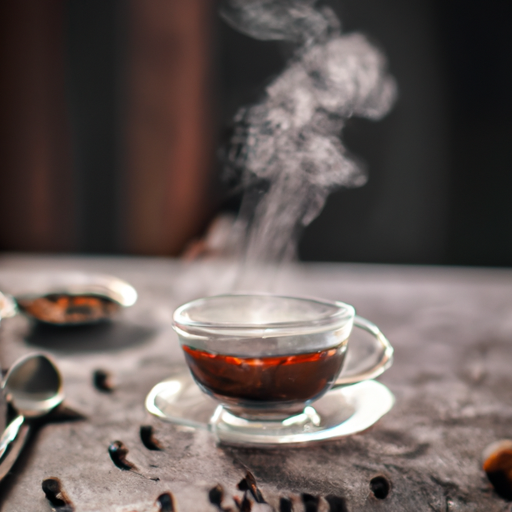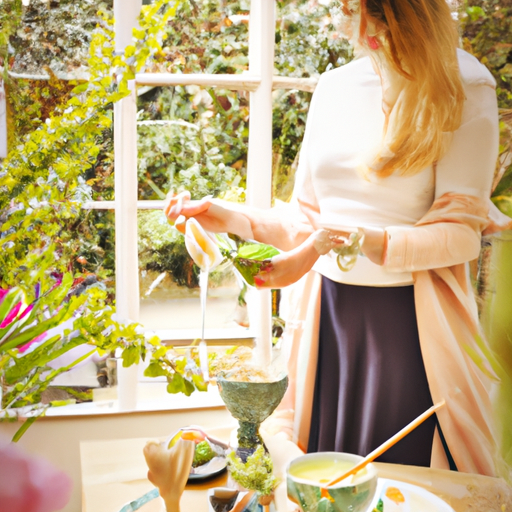Are you searching for a beverage that is both tasty and a harmonious fusion of flavors? Then the raspberry matcha latte recipe is the perfect choice for you!
This recipe takes the classic matcha latte to a whole new level by adding the vibrant taste of fresh raspberries. And let me tell you, it’s a match made in heaven!
The natural sweetness of the raspberries, simmered in sugar and water to create a sweetened berry puree, adds a layered effect to the latte that will have your taste buds singing. To make it even more flavorful, you can use almond or oat milk.
The matcha itself, a powdered green tea, pairs exceptionally well with sweet fruits like raspberry and strawberry. So whether you’re a matcha lover or a raspberry enthusiast, this latte is sure to please.
And if you’re short on time, there’s even a shortcut option using pre-flavored raspberry matcha. Trust me, this recipe is quick, easy, and absolutely delightful.
Get ready to sip on perfection!
Key Takeaways
- Raspberry matcha latte is a flavorful drink that combines fresh raspberries with matcha.
- Different milk options, such as almond, oat, or cow’s milk, can be used for a creamy and rich flavor.
- Pre-flavored raspberry matcha is available as a shortcut, but using ceremonial grade matcha is recommended for a smoother and more vibrant taste.
- Experimentation with different milk options and garnishes can help personalize and enhance the flavor of the latte.
What is it?
I love making a delicious raspberry matcha latte because it’s the perfect pairing of flavors. The combination of tart raspberries and earthy matcha creates a harmonious balance that is absolutely delightful.
Not only does this latte taste amazing, but it also offers some great benefits. Matcha is known for its high antioxidant content and potential to boost metabolism. Raspberry, on the other hand, is packed with vitamins and minerals, including vitamin C and manganese.
When it comes to choosing the best brands for matcha, look for ceremonial grade matcha, as it’s of higher quality and will give you a smoother and more vibrant taste. Some popular brands include Encha, Mizuba, and Ippodo.
So why not treat yourself to this flavorful and nutritious drink?
Preparation Steps
Simmering the fresh raspberries in a simple syrup of sugar and water adds a burst of natural sweetness to the latte, creating a delightful flavor combination that will leave your taste buds craving for more. To achieve this step, start by combining equal parts sugar and water in a saucepan and bringing it to a gentle simmer. Add the fresh raspberries and allow them to simmer for about 10 minutes, until they become soft and release their juices. The syrup will become infused with the vibrant flavor of the raspberries, creating a sweet and tangy base for the latte. Once the raspberries have simmered, strain the syrup through a fine mesh sieve to remove any seeds or pulp. Now you have a smooth and flavorful raspberry syrup to add to your latte.
In addition to the simmering technique for raspberries, choosing the right milk for the latte is crucial. For a creamy and rich flavor, I recommend using almond or oat milk. These plant-based options complement the earthy matcha and sweet raspberries perfectly. However, if you prefer a traditional taste, cow’s milk can also be used. The choice of milk will depend on your personal preference and dietary needs. Remember, the milk you choose will greatly impact the overall taste and texture of your raspberry matcha latte. Enjoy experimenting with different milk options to find the perfect balance of flavors for your latte.
| Simmering Technique for Raspberries | Choosing the Right Milk for the Latte |
|---|---|
| Simmer fresh raspberries in a simple syrup of sugar and water for 10 minutes | Use almond or oat milk for a creamy and rich flavor |
| Strain the raspberry syrup through a fine mesh sieve to remove seeds and pulp | Cow’s milk can be used for a traditional taste |
| Use the smooth and flavorful raspberry syrup as a base for the latte | Experiment with different milk options for the perfect balance of flavors |
Variations and Substitutions
To add some variety to your raspberry matcha latte, consider exploring different flavor combinations and substituting ingredients to suit your taste preferences.
One way to switch things up is by using different milk alternatives. Instead of the traditional cow’s milk, you can try almond milk or oat milk for a nutty and creamy twist. These alternatives not only add extra flavor, but they also cater to those with dietary restrictions or preferences.
Additionally, get creative with your garnish options. Instead of just sprinkling some powdered matcha on top, you can add a sprinkle of crushed freeze-dried raspberries for an extra burst of fruity flavor and a vibrant pop of color. Alternatively, you can garnish with fresh mint leaves or a drizzle of honey for a touch of freshness and sweetness.
Don’t be afraid to experiment and make this raspberry matcha latte truly your own!
Frequently Asked Questions
Can I use frozen raspberries instead of fresh raspberries in the recipe?
Absolutely! Using frozen raspberries in the recipe adds an icy twist. To properly thaw and use them, simply place the berries in a bowl and let them defrost in the fridge overnight. Then, follow the recipe as usual for a delightful raspberry matcha latte.
Can I use a different type of milk, such as soy or coconut milk, instead of almond or oat milk?
You can definitely use different types of milk like soy or coconut milk instead of almond or oat milk in the raspberry matcha latte recipe. Each milk has its own unique taste and texture, so choose the one that suits your preferences. Experiment and find your favorite combination! As for sweeteners, using different types like honey, agave syrup, or maple syrup can add a touch of sweetness to the latte. It’s all about personal preference and what you enjoy.
Can I use a different type of sweetener instead of sugar to simmer the raspberries?
Using alternative sweeteners for simmering raspberries can be a great option. Some alternatives to sugar include honey, maple syrup, or stevia. Each sweetener has its own unique flavor and characteristics, so choose based on your preference and dietary needs.
How long does it take to simmer the raspberries in sugar and water?
Simmering raspberries in a sweet sugar-water bath is like creating a vibrant symphony of flavors. While the exact time may vary, it generally takes about 10-15 minutes to preserve the raspberries and infuse them with a luscious sweetness. Plus, if you prefer alternative sweeteners, feel free to experiment and find your perfect match!
Can I use a different type of fruit instead of raspberries in the recipe?
Yes, you can use different fruits instead of raspberries in the recipe. Strawberries would be a great substitute as they also pair well with matcha. As for milk substitutes, you can use soy milk or coconut milk for a different taste.
Conclusion
In conclusion, the delicious raspberry matcha latte recipe offers a delightful combination of flavors that’s both easy to make and bursting with natural goodness.
By using fresh raspberries instead of artificial flavoring, the latte provides a vibrant and authentic taste experience.
While some may worry about the extra step of simmering the raspberries in sugar and water, this process adds a layered effect to the drink, creating a visually appealing and flavorful treat.
So why not indulge in this delicious and refreshing raspberry matcha latte?
Imagine savoring the sweet and tangy raspberry puree, perfectly complemented by the smooth and earthy matcha, for a truly satisfying sip.










